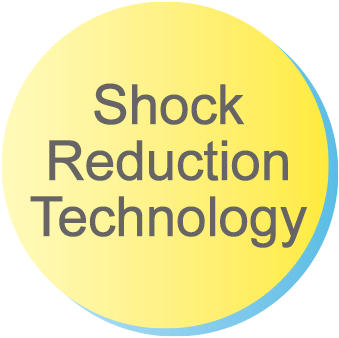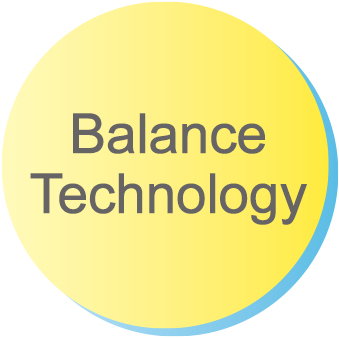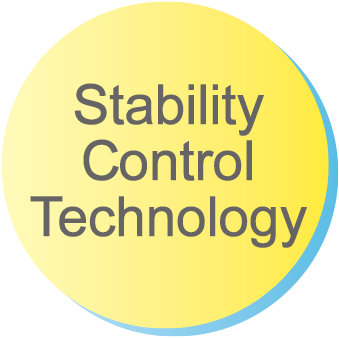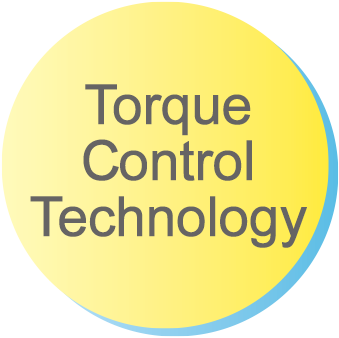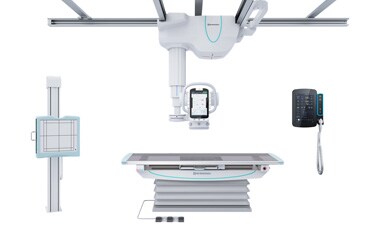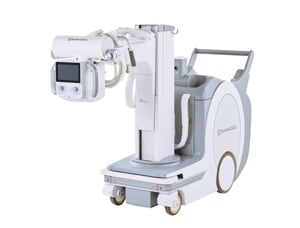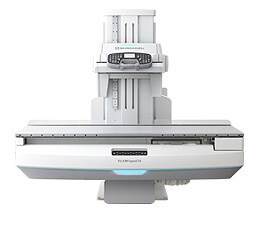About GLIDE Technologies
A medical system can weigh as much as several hundred kilograms. Shimadzu’s GLIDE Technologies provide a smooth experience for handling such heavy systems by mirroring the intent of the operator in a natural way.
The Technical Elements of GLIDE Technologies
GLIDE Technologies consist of five technical elements: sensing technology, torque control technology, shock reduction technology, stability control technology, and balance technology. The development of these technologies was driven by our engineers’ passion for improving the operability of medical systems.
■ Sensing Technology
One of the main challenges for power assist technology is that both the operator and system are in motion. The system must accurately detect forces applied to the unit by the operator, even while they are both moving. Knowhow about solving this challenge is packed into the control handle, which has undergone repeated prototyping and testing.

Patent No.: 3575405, etc.
■ Torque Control Technology
A system can be seemingly controlled to obtain the desired movement simply by adjusting the speed and acceleration according to the general physical law, F = Ma. However, no matter how much we adjusted speed and acceleration, we could not eliminate the “unnaturalness” of the movement in the system. The root cause of this was feedback delay and cumulative error. To solve the problem, we revised the motor and system characteristics and developed a new type of torque control that always transmits torque accurately with no delay. This successfully eliminated the “unnaturalness” in the system movement.

Patent No.: 3446715, etc.
■ Shock Reduction Technology
Power assist technology is a constant battle against the operator’s senses. For example, when an operator moves the system from a standstill, the force that the operator applies to the control handle is stronger than they expect. If this force is transmitted to the motor without modification, the unit will suddenly jerk forward, causing it to shudder . We learned that even when sensors detect the same operating force, the operator’s intention may differ depending on the system drive state and operator’s movement. It took a long period of trial and error to remove this shudder without making the system movement unnatural. The result was our speed-dependent torque control technology (shock reduction technology).

Patent No.: 5077270, etc.
■ Stability Control Technology
Operating forces in multiple directions must be detected while controlling the direction of system travel. However, straight-line stability and directional responsiveness tend to work in opposition to one another. To deal with this, stability control technology was developed to change the balance between straight-line stability and directional responsiveness of the system depending on the installation and usage scenario.

Patent No.: 4893199, etc.
■ Balance Technology
A support column for the X-ray tube. Shimadzu’s mobile X-ray system employs a collapsible support column to ensure the operator's forward visibility during rounds. This collapsible support column features Shimadzu's unique balance technology, enabling smooth operation regardless of the height position of the X-ray tube.

Patent No.: 6540880, etc.
Shimadzu Products Featuring “GLIDE Technologies”
GLIDE Technologies are incorporated in multiple Shimadzu products. These include the POWER GLIDE™ function in Shimadzu’s RADspeed™ Pro SR5 Version radiography system that allows for smooth manipulation of the X-ray tube, the GLIDE VIEW™ function in Shimadzu’s MobileDaRt Evolution™ MX8 / MX9 Version mobile X-ray system that allows for smooth column extension and system travel on hospital rounds, and the GLIDE ASSIST™ function in Shimadzu’s FLUOROspeed™ X1 edition patient-side R/F system that allows for smooth manipulation of an imaging deck.
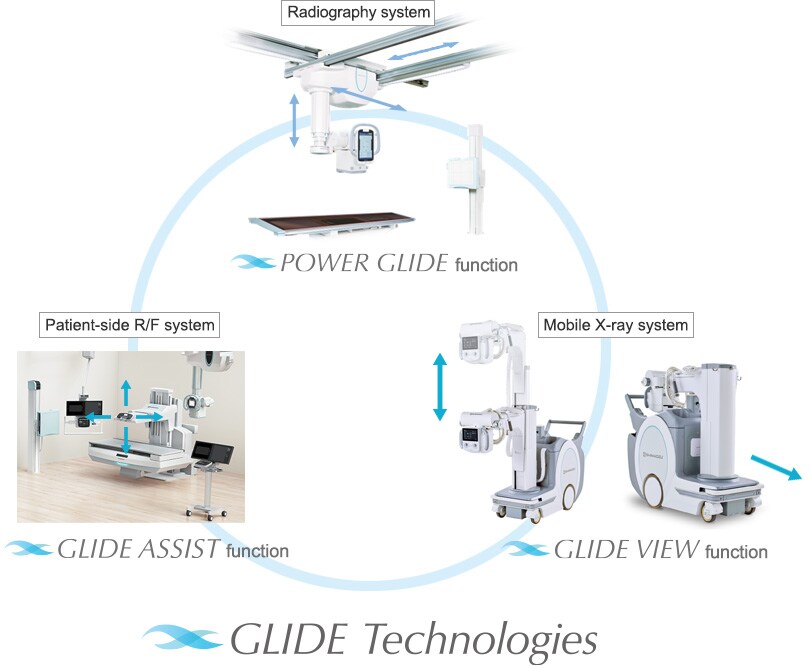
Engineer’s Perspective
The development of this system stemmed from my desire to “develop the best power-assisted mobile X-ray system in the United States.”
At first, we tried to implement power assist through external feedback control of the force applied by the operator, but it was very uncomfortable for the operator due to the delayed response. Then we hit on the idea of implementing power assist through feedback control that incorporates the human operating force into the system. This brought us much closer to achieving a smooth system operation that mirrored the operator's intent in a natural way. A number of hurdles stood in the way of developing a system we felt completely satisfied with but we overcame them, and the system we developed is now the top-selling product in the U.S. I still remember the joy I felt on receiving compliments and hearing how surprised hospital professionals were after using the system.
We will continue to develop these systems with the hope that users will associate Shimadzu with ease-of-use. Hospitals outside Japan currently refer to our systems as “Shimadzu systems.” I would like the systems I develop to become so familiar to customers that they just call them by our company name, “Shimadzu.”
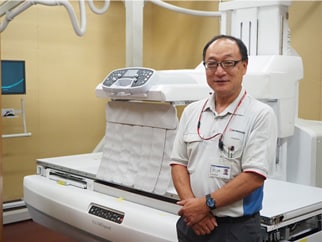
Developer: Tatsuya Araki
(Component Development Unit, Research & Development Department, Medical Systems Division)





